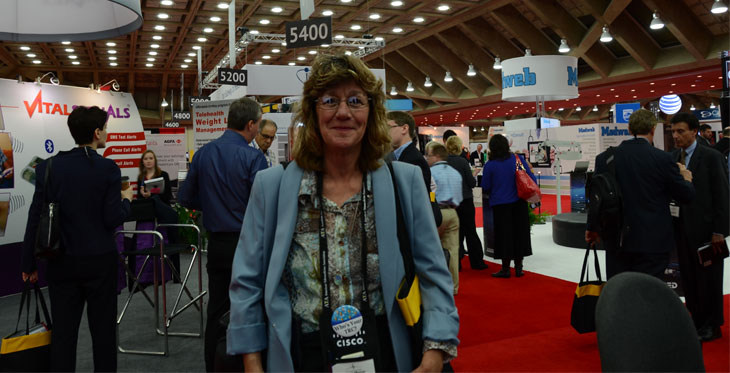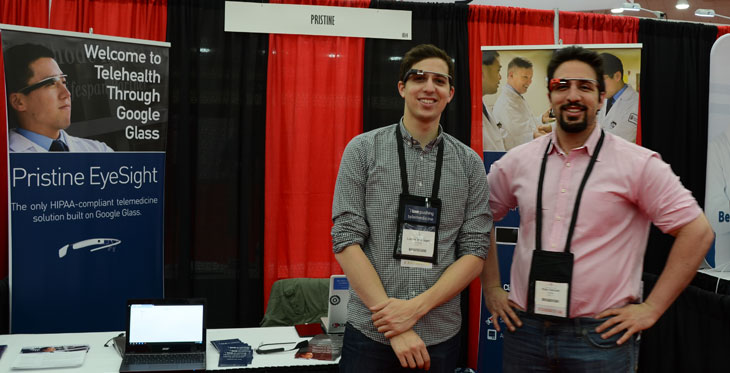The American Telemedicine Association’s annual trade show is touted as “the world’s largest” for telemedicine, telehealth and mhealth products and services.
For Janet Major, it’s like a trip to Disneyland.
“There’s just always a lot of really cool stuff: new trends, the latest and the greatest, last year’s latest and greatest upgraded to make it even better,” says Major, the Arizona Telemedicine Program’s associate director for facilities. “So yes, for me it absolutely is like going to Disneyland.”
Major joined ATP 18 years ago with a background in live-theater stage design – experience that helps her create telemedicine clinics with high-functioning audio and visual capabilities.
Also an active member of the American Telemedicine Association’s Technology Special Interest Group, she was elected in May to serve two years as the group’s vice chair. After that she will serve two years as chair.

Topping Major’s “latest and greatest” list at this year’s show, held in May in Baltimore: HIPAA Compliant Google Glass, developed by telehealth vendor Pristine of Austin, Texas.
Pristine’s new software provides hands-free, voice-controlled video-streaming and checklist capabilities. That makes it possible, for example, for a surgeon in the operating room to focus on her patient, while simultaneously reviewing the patient’s CT scan and other medical record information.
Pristine is driving home its message in its new marketing slogan: “I love pushing telemedicine carts around, said no one ever.”
Another big hit this year, Major says, was WallDoc, developed by GlobalMed of Scottsdale, Arizona. WallDoc is a wall-mounted exam station designed to fit easily into smaller exam rooms, as an alternative to more cumbersome telemedicine carts.
Also on Major’s list this year:
- A hand-held fundus camera that can replace the older cameras that require two people to lug into a clinic. The hand-held version will be a plus in Arizona and other states where screenings for diabetic retinopathy are a public health priority, Major says.
- Stethoscopes for remote auscultation, introduced last year and showing great promise for telemedicine and telehealth.
- A slide-on lens for iPhones, designed to enable diagnostic quality dermatologic imaging. This too made its debut last year, and attracted great interest again in May.
And now comes the follow-up.
“After I go to an ATA trade show, I come back and begin researching the products that were of major interest. Last year we engaged (University of Arizona Health Network) cardiologists to compare two kinds of Bluetooth stethoscopes and determine which one would be the most versatile in which setting,” Major says.
In addition, several doctors with the University of Arizona Health Network are giving Google Glass a tryout, thanks to innovation grants from the Arizona Telemedicine Program.
“We need to get our hands on all this,” Major says. “We need to see what it can and can’t do. We have to push it to its limits.”
For more information on the American Telemedicine Association, visit http://www.americantelemed.org/

